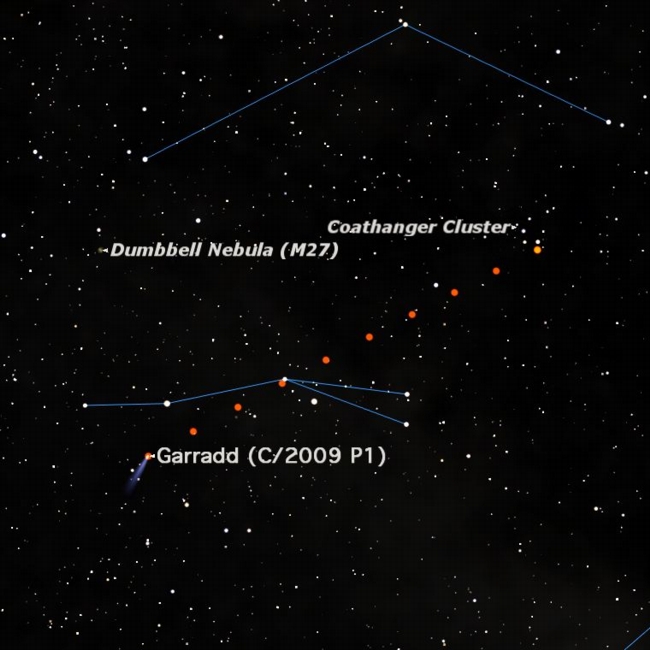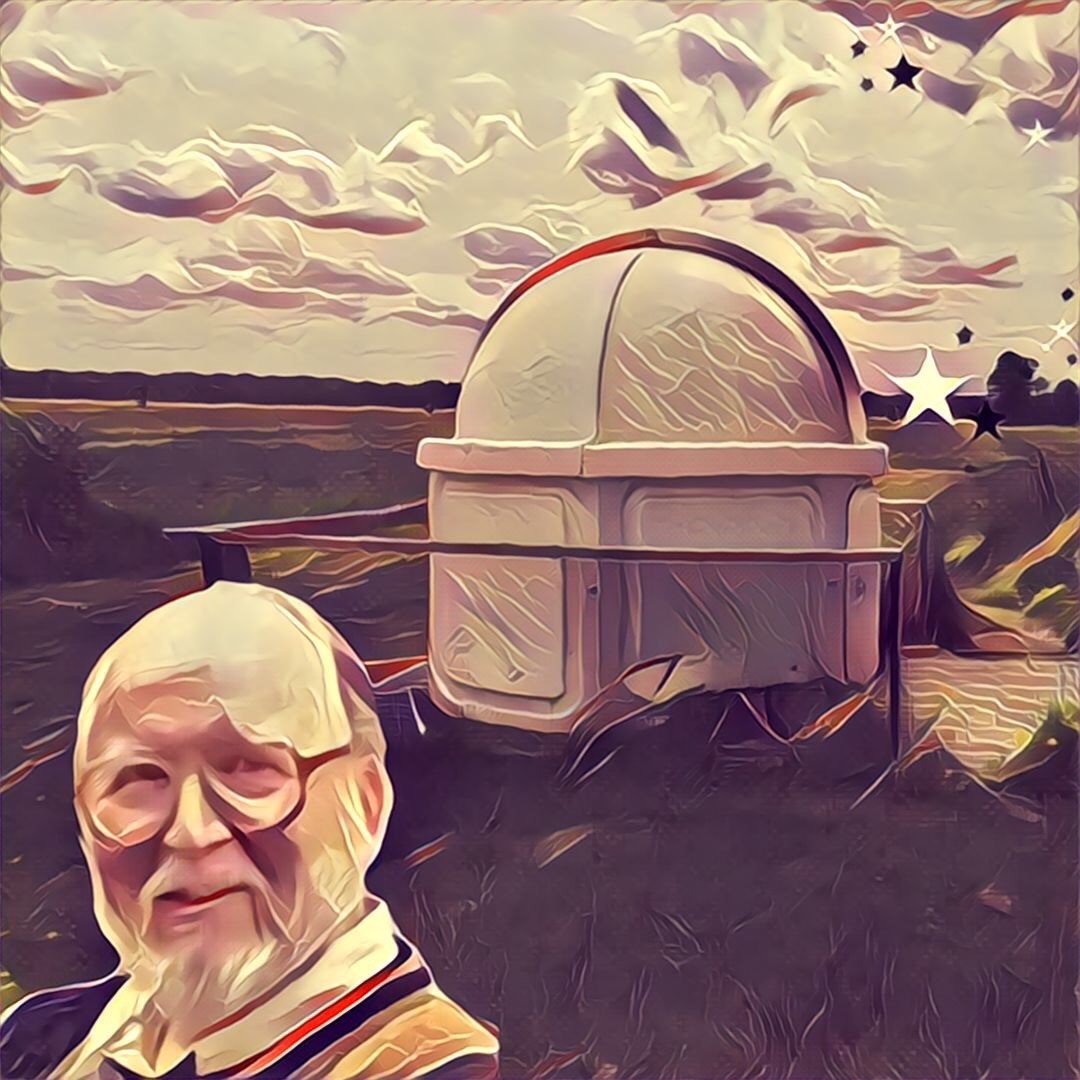Comet Double Feature: Comets Elenin & Garradd Now Showing in Night Sky

This story was updated at 5 p.m. EDT.
Skywatchers often ask "When's the next comet?" In fact, if you’re prepared to do a bit of searching, there are always several comets visible in the night sky, including two right now.
Some comets are like old friends, they keep coming back at regular intervals to visit. These are called periodic comets; Comet Halley was the first such comet to be identified, by Edmond Halley back in 1705. It returns to the inner solar system every 75 to 76 years; its last appearance was in 1986 and its next will be in 2061. At present Halley is out just beyond Neptune;s orbit.
Other comets are one-time visitors: they come in to visit us from the Oort Cloud, warm themselves for a few months by the sun, and then head back out to the farthest reaches of the solar system. [Best Close Encounters with Comets]
There are two comets currently visiting the inner solar system — comet Elenin and comet Garradd — so the next two months will provide some excellent opportunities to observe these unusual visitors. The sky map of the two comets here shows they locations over the next few weeks.
All comets share one characteristic: they are like "dirty snowballs" in their makeup. Their nucleus of rock and ice, when warmed by the sun, sheds its ice which forms a graceful tail as it’s swept away by the solar wind. Because it’s the solar wind that drives the gas and vapor away, comet’s tails always point away from the sun.
In the sky, many comets appear like ghostly fingers pointing down towards Earth. That is one reason why comets have traditionally been viewed as harbingers of death and disaster. To astronomers, on the contrary, they are objects of great beauty and attract close scientific scrutiny for the information they reveal about the ancient history of the solar system and its farthest reaches.
Breaking space news, the latest updates on rocket launches, skywatching events and more!
Comet Elenin now showing
The first comet visitor in the sky we'll review is comet Elenin (C2010 X1). You may have heard about, because it’s become a popular item for the gloom and doom crowd, who see portents of disaster in ordinary astronomical objects.
The truth about Comet Elenin is that it is a quite ordinary, fairly small comet discovered on Dec. 10, 2010 by Russian amateur astronomer Leonid Elenin using a remote controlled telescope in Arizona.
This comet will pass closest to the sun on Sept. 10 (45 million miles or 72 million kilometers) and closest to Earth on Oct. 16 at a distance of 22 million miles (35 million km.)
Despite the fact that this is a really tiny body, 3 or 4 km. in diameter which will miss the Earth by 22 million miles, the purveyors of gloom and doom have seized upon it as bringing disaster upon the Earth. Please don’t take them seriously, instead try to spot this interesting little object.
At present, comet Elenin is too close to the sun to be viewed from the Northern Hemisphere, though observers south of the equator may catch it low in the western sky after sunset. Northern observers' turn will come after the comet passes the sun and starts back out towards the Oort Cloud.
In the last few days of September, Elenin will separate from the sun in our morning sky. It will be visible in binoculars in the morning sky for all of October, and we will publish finder maps then.
There is an unusual opportunity to “observe” this comet when it is very close to the sun during the last week of September. To do this, you won’t be able to use your eyes or any optical aid; instead you will use your computer.
Several times every day, the SOHO satellite returns images of the sun, including ones from the observatory's LASCO C3 camera which has a field of view of about 15 degrees. This has an occulting disk which blocks the Sun itself but lets the background stars appear.
If you take a look at it right now, you'll see Venus off to the left of the sun and the star Regulus to the right. During the last week of September, you will be able to see Comet Elenin pass through the field of view.
Comet Garradd graces the sky
The other bright comet in the night sky hasn't received the publicity of comet Elenin but is actually a better opportunity for skywatchers. This is comet Garradd (C2009 P1), which was discovered on Aug. 13, 2009 by Australian astronomer G. J. Garradd. [Video: Where Comets Come From]
Comet Garradd is very easy for any experienced skywatcher to locate and observe with binoculars. Currently it is just south of the small but well-known constellation of Sagitta, the arrow. This arrow-shaped constellation is right in the middle of the summer triangle formed by the bright stars Vega, Deneb, and Altair. On Wednesday (Aug. 24), Garradd was right under the tip of the arrow.
Tonight (Friday, Aug. 26), Garradd it will be impaled by the shaft of the arrow, and one week later (Friday, Sept. 2) it will be right by the "hook" of the popular Coathanger Cluster, also known as Brocchi’s Cluster. During that time it should increase in brightness slowly from about magnitude 8.2 to about magnitude 8.1, an easy object with binoculars.
The comet will continue moving westward and brightening, reaching magnitude 7.0 on Feb. 12. Astronomers measure the brightness of a night sky object using a reverse scale of magnitude. The lower the number of an object's magnitude, the brighter the object appears.
The sky map in this story shows the position of comet Garradd at 11 p.m. EDT each night from through Sept 2.
A reminder: All of the magnitudes given here for comets are estimates; comet brightness is notoriously hard to predict. The comets may be fainter than predicted or we may get lucky and get a couple of really bright comets.
Editor's note: If you snap an amazing photo of comet Elenin or comet Garradd, and would like to share them with SPACE.com for a possible story or gallery, please contact managing editor Tariq Malik at: tmalik@space.com.
This story was updated at 5 p.m. EDT to correct the expected brightness of comet Garradd through Feb. 12, 2012.
This article was provided to SPACE.com by Starry Night Education, the leader in space science curriculum solutions. Follow Starry Night on Twitter @StarryNightEdu.

Geoff Gaherty was Space.com's Night Sky columnist and in partnership with Starry Night software and a dedicated amateur astronomer who sought to share the wonders of the night sky with the world. Based in Canada, Geoff studied mathematics and physics at McGill University and earned a Ph.D. in anthropology from the University of Toronto, all while pursuing a passion for the night sky and serving as an astronomy communicator. He credited a partial solar eclipse observed in 1946 (at age 5) and his 1957 sighting of the Comet Arend-Roland as a teenager for sparking his interest in amateur astronomy. In 2008, Geoff won the Chant Medal from the Royal Astronomical Society of Canada, an award given to a Canadian amateur astronomer in recognition of their lifetime achievements. Sadly, Geoff passed away July 7, 2016 due to complications from a kidney transplant, but his legacy continues at Starry Night.

